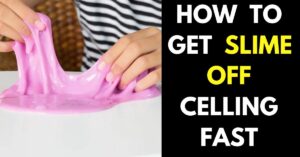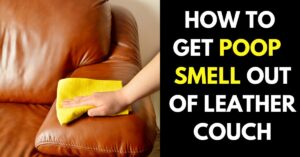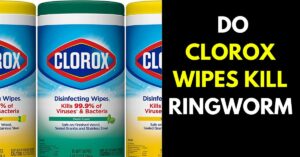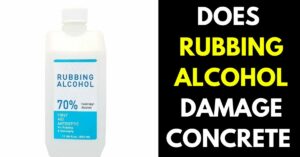
Accidents happen, and one that pool owners might unexpectedly face is the presence of soap detergent in their swimming pool. It might be a spill from nearby cleaning or the mistaken use of the wrong products; soap detergent can quickly turn crystal-clear waters into a bubbly mess.
But more than just an unsightly problem, soap in the pool can lead to imbalances in the water chemistry and even pose safety risks for swimmers. Addressing this issue promptly is vital to restoring your pool to its pristine condition.
This isn’t just about aesthetics; it’s about ensuring the health and safety of everyone who enjoys the pool. In this guide, we’ll walk you through the signs of soap detergent contamination, the potential impact on your pool, and a step-by-step process to clean it out effectively.
Step-by-Step Guide to Removing Soap Detergent

Step 1: Turn Off the Pool’s Circulation System
Before cleaning the soap detergent from your pool, the first action required is to turn off the pool’s circulation system. This might seem counterintuitive, but it’s crucial for several reasons.
When soap detergent is present in the pool, circulating the water only spreads the problem around, making it more difficult to isolate and remove the contamination. Moreover, the bubbles created by the soap may interfere with the filter system, leading to potential damage.
Here’s how to safely turn off the circulation system:
- Locate the Pool’s Control Panel: This is usually found near the pump and filter system.
- Identify the Power Switch or Button: Look for the switch or button that controls the pool’s circulation, often labeled as ‘Power’ or ‘Circulation.’
- Turn Off the Circulation: Simply switch it off or press the button, depending on your pool’s design.
- Confirm the System is Off: Listen for the cessation of noise from the pump and visually check that the water is no longer circulating.
2. Remove Physical Debris
After turning off the pool’s circulation system, the next vital step in cleaning soap detergent out of your pool is to remove any visible debris physically. This may include clumps of detergent, leaves, or other foreign objects that could have contributed to the problem. Here’s how to do it:
Skim the Surface
- Use a Pool Skimmer: Equip yourself with a long-handled pool skimmer to reach all areas of the pool’s surface.
- Gently Skim: Move the skimmer gently across the surface to collect any floating debris, including soap scum and bubbles.
- Dispose of the Debris Properly: Ensure that the collected debris is disposed of in a way that won’t lead back into the pool.
Vacuum the Pool
- Attach a Pool Vacuum: If you have a manual pool vacuum, attach it to the skimmer suction line or dedicated vacuum line.
- Vacuum Slowly: Move the vacuum slowly across the pool floor, paying close attention to corners and crevices where detergent may have settled.
- Clean the Vacuum Filter: If you notice a decrease in suction, check and clean the vacuum filter as needed.
Protect the Filter System
- Monitor the Filter Pressure: Keep an eye on the pool filter’s pressure gauge, as an unexpected rise in pressure may indicate a clog.
- Backwash: If your filter system requires backwashing, do this as necessary to maintain optimal performance.
Inspect and Clean Pool Accessories
- Check Pool Toys and Floats: Inspect and clean any pool toys or floats that may have come into contact with the detergent.
- Wash with Fresh Water: Rinse them off with fresh water to ensure no detergent residue remains.
3. Use a Pool Flocculant
After removing the physical debris, you might still find the water cloudy or some detergent residue remains. This is where a pool flocculant comes into play.
A flocculant is a chemical that helps particles in the water to coagulate, forming larger clumps that can be more easily removed. Here’s how to use it:
Choose the Right Flocculant
- Consult with a Pool Professional: If you’re unsure what product to use, consult a pool care professional or retailer.
- Read Product Instructions: Different flocculants may have specific instructions, so it’s essential to read the packaging or consult the manufacturer’s guidelines.
Apply the Flocculant
- Prep the Pool: Ensure that the pH levels of the pool are balanced before applying the flocculant, as an imbalance may reduce its effectiveness.
- Follow the Manufacturer’s Instructions: Carefully measure and apply the flocculant according to the guidelines provided.
- Allow Time for the Flocculant to Work: The flocculant needs time to clump the particles together, usually several hours or overnight. Do not use the pool during this time.
Vacuum the Pool Again
- Set the Vacuum to Waste: If possible, set your pool vacuum to the “waste” setting to bypass the filter and remove the clumped particles directly.
- Vacuum Slowly and Thoroughly: Move the vacuum slowly across the pool floor, paying close attention to areas where clumps may have settled.
- Monitor the Water Level: Vacuuming to waste will lower the water level, so monitor it closely and refill as necessary.
- Check the Water Clarity:
Inspect the Water: After vacuuming, check the water’s clarity to ensure that all detergent particles have been removed. - Repeat if Necessary: If the water remains cloudy, you may need to repeat the flocculation and vacuuming process.
Step 4: Vacuum the Pool Again
Following the application of a pool flocculant, you will notice that the detergent and other particles have clumped together at the bottom of the pool. This makes it the ideal time to vacuum the pool again to ensure that all lingering detergent residue is removed. Here’s how to go about it:
Set Up the Vacuum
- Set the Vacuum to Waste (If Possible): Using the “waste” setting will bypass the filter system, allowing for the direct removal of the clumped particles.
- Ensure Proper Hose Connection: Check that the hose is securely connected to prevent any air from entering the system, which could reduce suction power.
Vacuum the Pool Floor
- Move Slowly: Approach this step with patience, moving the vacuum slowly across the pool floor to ensure that all clumps are collected.
- Focus on Problem Areas: Pay close attention to corners, crevices, and other areas where the clumps may have settled, ensuring a thorough cleaning.
- Regularly Check the Filter and Vacuum Bag: Depending on the amount of residue, you may need to clean the vacuum bag or filter frequently to maintain optimal suction.
Monitor the Water Level
- Keep an Eye on the Water Level: If vacuuming to waste, the water level will decrease, so monitor it closely.
- Refill as Necessary: If the water level drops significantly, refill the pool to the appropriate level using fresh water.
Inspect the Pool
- Check the Water’s Clarity: After vacuuming, take a close look at the water to ensure that all detergent particles have been removed.
- Repeat if Required: If the water still seems cloudy or you notice lingering residue, consider repeating the flocculation and vacuuming process.
Step 5: Balance the Pool’s Chemicals
After physically removing the detergent and using a flocculant, the pool may appear clear, but it’s essential to ensure that the water’s chemical balance is restored. An imbalance can lead to issues like algae growth, cloudy water, and even skin and eye irritation for swimmers. Here’s how to balance the pool’s chemicals:
Test the Water
- Use a Reliable Testing Kit: Obtain a quality pool water testing kit from a reputable supplier, ensuring it measures pH, chlorine, alkalinity, and other essential factors.
- Follow the Instructions Carefully: Each kit may have specific instructions, so read and follow them closely for accurate results.
Adjust the pH Levels
- Identify the Current pH Level: The ideal pH level for most pools is between 7.2 and 7.6.
Use pH Increaser or Decreaser as Needed: If the pH is outside the ideal range, carefully add the appropriate chemicals to bring it back into balance.
Balance Chlorine and Other Sanitizers
- Check Sanitizer Levels: Chlorine or other sanitizer levels must be within the recommended range for your pool type.
- Adjust as Needed: Use appropriate chemicals to increase or decrease sanitizer levels according to the manufacturer’s instructions.
Address Alkalinity and Other Factors
- Test Total Alkalinity: The ideal range is generally between 80 and 120 ppm.
- Adjust if Necessary: If alkalinity is out of balance, use appropriate chemicals to correct it.
Consider Additional Factors: Depending on your pool type and location, you may also need to balance calcium hardness, stabilizers, and other factors.
Re-test and Monitor
- Re-test After Adjustments: Allow the chemicals to circulate for a few hours, then re-test to ensure everything is balanced.
- Monitor Regularly: Continue to test and adjust as needed, particularly after significant events like a heavy rainstorm or a large pool party.
9 Tips to Prevent Soap Detergent from Entering the Pool in The Future
1. Avoid using regular soaps and detergents near the pool
Regular soaps and detergents can easily make their way into the pool, especially if used near it. Stick to pool-safe cleaners and avoid washing anything with soap close to the pool area to minimize the risk.
2. Educate swimmers about proper pre-swim hygiene
Sometimes, detergents enter the pool from residues on swimmers’ bodies or swimsuits. Encourage swimmers to rinse off with fresh water before entering the pool to remove any lingering soap or cosmetic products.
3. Implement strict rules about pool toys and accessories
Pool toys and accessories that have been cleaned with soap can carry residues into the water. Make sure to rinse them thoroughly with fresh water before use, and consider implementing rules about what can and cannot enter the pool.
4. Regularly check and clean pool filters
Filters that are clogged with debris can become a breeding ground for soap scum. Regular maintenance and cleaning of filters will ensure they are not contributing to detergent contamination.
5. Use a pool cover when not in use
A pool cover can prevent accidental contamination from various sources, including soap detergent. Covering the pool when it’s not in use provides a simple and effective barrier.
6. Monitor and educate pool cleaning staff or service providers
If you employ pool cleaning staff or use a professional service, ensure that they understand the importance of avoiding soap detergent and are using appropriate cleaning products and procedures.
7. Install and maintain proper pool drainage
Effective drainage around the pool area can prevent water containing detergents from other sources, like washing areas, from flowing into the pool. Proper installation and maintenance of drainage systems are essential.
8. Create a designated washing area away from the pool
If you need to wash pool toys, floats, or even pets near the pool area, consider creating a designated washing station that’s far enough away from the pool to prevent soap runoff from entering the water.
9. Keep a close eye on children and pets near the pool
Children and pets can inadvertently bring soap or other contaminants into the pool. Supervising them closely and educating them about pool hygiene can prevent accidental contamination.
Final Words
Maintaining a clean and healthy pool is more than just an aesthetic concern; it’s a commitment to the well-being and enjoyment of every swimmer who takes a plunge into the water. The inadvertent presence of soap detergent in the pool can pose challenges, but with awareness, diligence, and thoughtful preventive measures, such issues can be largely avoided.
Your pool is more than a body of water; it’s a gathering place, a spot for relaxation, and a source of fun and exercise. Keeping it free from contaminants like soap detergent enhances its visual appeal and overall integrity and safety.







